Did you know that cats should see their veterinarian at least once a year? That’s right, even if they are indoors only and seem healthy, it’s good to have a check-up. A big reason that people do not take their cat in for regular care (aside from money) is the stress they perceive that their cat experiences. A survey found that 38% of cat owners reported that they get stressed out just thinking about taking their cat to the vet, and 58% say their cat hates going to the vet. I’ve previously written about how training your cat to love a carrier can make this whole process a LOT easier. But what about what happens AT the vet?
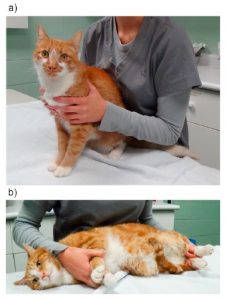
Researchers at the Ontario Veterinary College have published two studies exploring how the way cats are handled at the vet might effect their behavior. The premise of both studies was comparing responses to what the authors call “passive restraint” (defined as handling the cat lightly in a position of the cat’s choosing) and “full-body restraint” (holding the cat on their side, while grabbing the cat’s legs, preventing movement of the head, body and limbs).
Both studies included (I think the same) 51 healthy adult shelter cats. All cats were first categorized as either friendly or unfriendly according to an “Unfamiliar Person” test. Each cat was individually placed in a room in a carrier. The carrier door was opened and the cat was given two minutes to choose to exit the carrier, explore the room, and approach the experimenter (an unfamiliar person). If at the end of two minutes, the cat was still in the carrier, the experimenter removed the top of the carrier and left the room, and the cat was given another minute to explore. At that point, the experimenter approached and attempted to pet the cat. Friendly cats had to leave the carrier, approach the experimenter within about a foot and a half, and allow petting. Twenty-four cats were categorized as friendly, and 23 as unfriendly.
Next, all cats were given a two-minute “mock” physical exam using either passive or full-body restraint. The experimenters measured how long it took to restrain the cat, as well as the presence of ear movements, tail lashing, lip licking, respiratory rate, and amount of pupil dilation to assess stress responses to both types of handling. Two cats in each condition were not able to be examined due to aggressive behavior.

Now for the results of the first study “Can you handle it? Validating negative responses to restraint in cats”: it took longer to get cats into full-body restraint than passive restraint. Full-body restraint also resulted in a higher respiratory rate and more lip licking. Cats who had been subjected to full-body restraint were quicker to jump off the examination table. The authors concluded that the full-body restraint increases the activation of a cat’s stress system, and the attempts to escape the exam table suggest that those cats found the experience more aversive than the cats in the passive restraint condition.
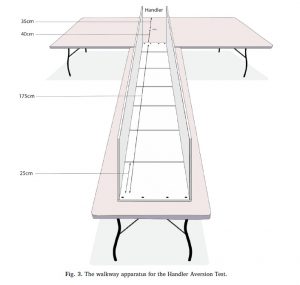
Fast-forward to 2019. The second study that was just published earlier this year in Applied Animal Behaviour Science, titled “Testing two behavioural paradigms for measuring post-handling cat aversion behavior,” looked at whether cats found the handler threatening AFTER being placed in either full-body or passive restraint. After the two-minute exam, cats were given two tests to assess how they felt about the person who did the exam. For the first, cats had previously been trained to walk down a runway for treats. Only 38 of the shelter cats were able to be trained to complete this task. The cat was placed on the runway, with the handler at the other end, and the experimenters recorded whether the cat approached or moved away from the handler.
There were no differences in the time it took cats to approach the handler, regardless of whether they had been subjected to passive or full-body restraint. Because no differences were found, and because a sizeable number of cats could not be trained to use the walkway, it appears that this is not a good measure of aversion responses in cats.
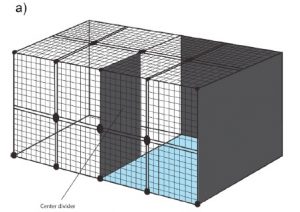
But wait, there’s more! The researchers next tested whether cats would form negative associations with a LOCATION after full-body restraint compared to passive. This study included 45 shelter cats and 10 adult laboratory cats who were group housed. All cats were subjected to BOTH restraint methods for one full minute, but in two different, visually distinct compartments of an enclosure. After the cat had been restrained, they were allowed to choose which side of the compartment they wanted to stay in – the one they had been passively restrained in, or the one in which they received full-body restraint. All laboratory cats, and the “friendly” shelter cats spent more time in the passive compartment; the “unfriendly” shelter cats were equally torn between compartments, perhaps finding both types of handling aversive.
From these studies, we can conclude that overall, cats have fewer stress-responses to passive restraint. For some cats, particularly the friendly ones, those stress-responses carried over to preferring the location that they had received passive restraint in compared to full-body restraint. However, the cats subjected to full-body restraint were no more or less likely to approach the person who had restrained her compared to the passively restrained cats, so to answer my original question, it doesn’t appear that cats hold much of a grudge if any.
Cat handling is a hot topic for a lot of reasons, and the trend of “less is more” can be found in several movements to help make the veterinary experience better for cats (e.g., Cat Friendly Practice, Fear Free and Low-Stress Handling programs). I feel like I should mention that “scruffing” or the restraint of cats by holding the skin of their neck is NOT what was tested in this study. I bring this up because scruffing is a commonly used method of restraint that is considered outdated and a bit controversial, and unfortunately I know of no research to condemn or condone its use. Two studies (here and here) did not find strong evidence for aversive responses to a handling technique called “clipnosis” or pinch-induced behavioral inhibition in cats, which is sort of similar to scruffing. Regardless, the consensus is that cats should never be LIFTED by their scruff.
And, when we teach cat handling at the veterinary school, the messages that we try to leave in the student’s minds are, “do you automatically default to heavy handed techniques, and if so – why?” and “EBYs (Even Better Yets)” – what can we do better next time?
References
Moody, C. M., Picketts, V. A., Mason, G. J., Dewey, C. E., & Niel, L. (2018). Can you handle it? Validating negative responses to restraint in cats. Applied Animal Behaviour Science, 204, 94-100.
Moody, C. M., Mason, G. J., Dewey, C. E., Landsberg, G. M., & Niel, L. (2019). Testing two behavioural paradigms for measuring post-handling cat aversion behaviour. Applied Animal Behaviour Science, 210, 73-80.
Nuti, V., Cantile, C., Gazzano, A., Sighieri, C., & Mariti, C. (2016). Pinch-induced behavioural inhibition (clipthesia) as a restraint method for cats during veterinary examinations: preliminary results on cat susceptibility and welfare. Animal Welfare, 25(1), 115-123.
Pozza, M. E., Stella, J. L., Chappuis-Gagnon, A. C., Wagner, S. O., & Buffington, C. T. (2008). Pinch-induced behavioral inhibition (‘clipnosis’) in domestic cats. Journal of Feline Medicine and Surgery, 10(1), 82-87.


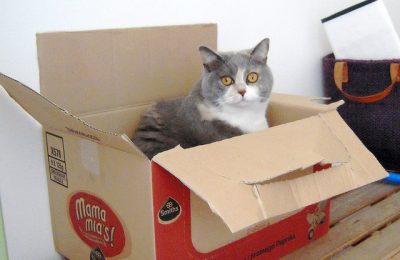
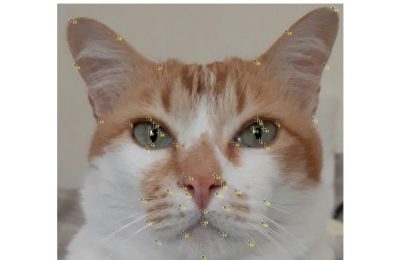
One thought on “Do cats hold a grudge? Measuring stress responses to passive or full-body restraint”